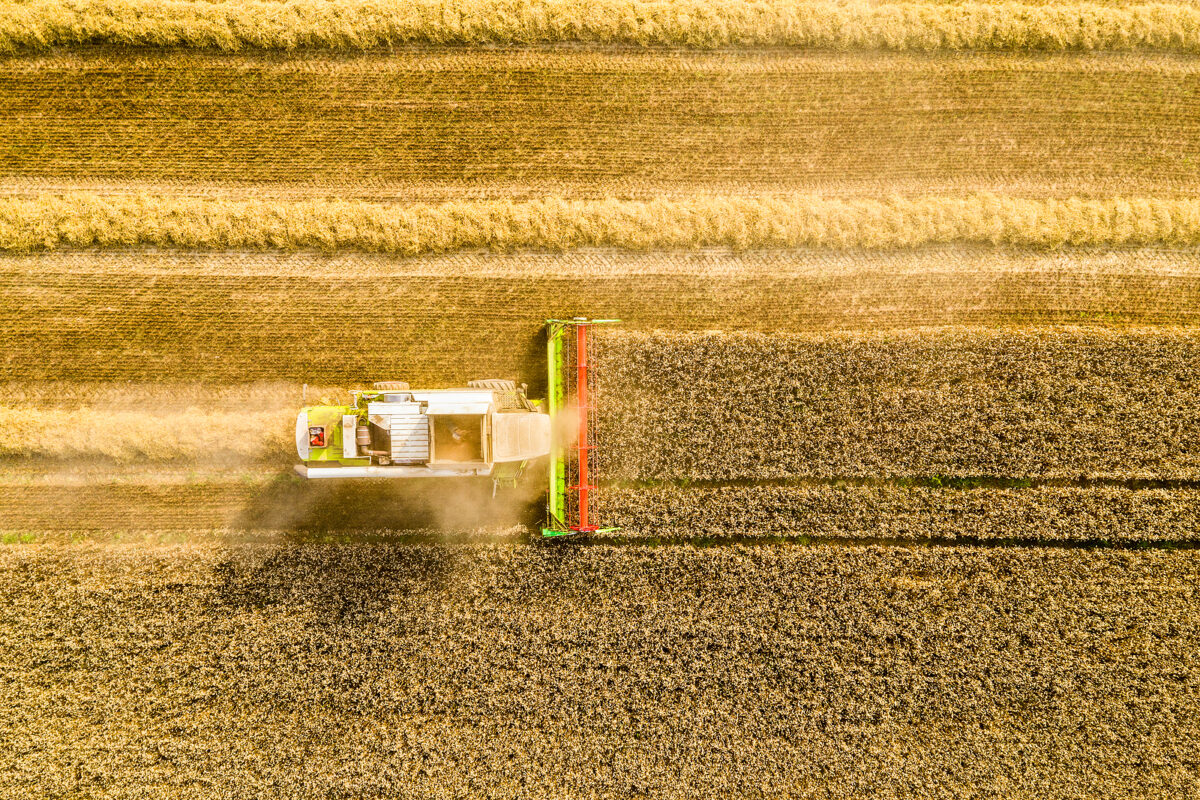There must be few, if any, recorded cases of anyone ever declaring farming sexy. In government, be it at local, national, or European Union-level, the agriculture portfolio is usually seen as a good one to avoid, a notion rooted in both the perceived (lack of) prestige of the position and the challenges associated with managing the sector’s various stakeholders.
Agricultural policies tend to involve complex, long-term issues such as land reform, climate change, rural development, and food security. These problems often require multi-year strategies, making it difficult for politicians to deliver quick wins or results that can be easily showcased to the public.
Indeed, compared to digitalisation, AI, IT, fintech, and automotive manufacturing, which tend to dominate discussions about economic growth and innovation across Central and Eastern Europe, agriculture retains a low profile and, often, is a low priority for governments.
This is an opportunity missed, for agriculture is the region’s quiet (if not quite sleeping) giant. While it may lack the glamour of tech start-ups or high-value manufacturing, the agricultural sector is of vital importance to the region’s economy, accounting for a significant share of GDP in several countries.
Its modernisation and expansion represent an underappreciated opportunity for innovation, investment, and sustainable development that could reshape not only the regional economy but also Europe’s food security landscape.
The backbone of the economy
Agriculture in CEE is much more than a legacy industry; it remains a vital economic driver. In countries like Romania and Bulgaria, the sector accounts for roughly four-five per cent of GDP—significantly higher than the EU average of 1.5 per cent.
Even in more industrialised nations like Poland and Hungary, agriculture’s contribution to GDP is still notable, hovering around two-three per cent. The sector employs millions across the region, from large-scale agribusinesses in Poland to family farms in Romania.
For many rural communities, agriculture is the primary, and sometimes only, source of employment, making it a key factor in social stability and local economies.
Yet despite this significant role, agriculture has historically received less policy and investment attention than it needs.
The EU’s Common Agricultural Policy (CAP) provides funding and subsidies, but these are often seen as mere safety nets to preserve the status quo (and placate the continent’s notoriously rowdy farmers) rather than springboards for innovation.
While tech start-ups secure venture capital and automotive firms receive government incentives, the agricultural sector struggles with issues like fragmented land ownership, outdated equipment, and low productivity.
To put it in Silicon Valley terms, agriculture is ripe for disruption.
Innovation under the radar
Not that the sector is entirely without innovation. A number of CEE firms are leading the charge in agricultural innovation, leveraging technology to solve some of the sector’s most persistent problems.
One of these is Poland’s SatAgro, which has developed a satellite-based monitoring system that allows farmers to optimise water usage, reduce fertiliser application, and better manage crop health. This kind of precision agriculture is crucial in a region where productivity still lags behind Western Europe.
Similarly, Lithuania’s Agrokoncernas is pioneering the use of drones and artificial intelligence to detect crop diseases before they spread, potentially saving farmers millions in lost revenue.
These technological advancements are not only improving yields but are also making farming more sustainable by reducing the need for chemical inputs and conserving natural resources.
Governments are beginning to recognise the potential of such innovations. Poland, for example, offers tax incentives for agricultural technology companies, and Hungary is rolling out grants aimed specifically at digitalising rural areas.
The EU, too, has begun to shift its funding focus under the latest CAP, emphasising sustainability and technology adoption as pillars for future support.
Agriculture as an opportunity, and challenge
Albeit achingly slowly, this emerging wave of agri-tech innovation across CEE has started to attract the attention of venture capital and private equity firms.
Recent data shows a noticeable uptick in agricultural investment in the region. According to the European Investment Bank (EIB), agricultural investments in CEE totalled over three billion euros in 2023, with a growing portion directed towards technology-driven projects.
These investments are significant not just for their monetary value but also for their potential to create ripple effects across the regional economy.
By modernising agriculture, CEE countries can boost productivity, improve rural living standards, and even address the issue of brain drain by creating high-skilled jobs in rural areas prone to both internal and external migration.
The agriculture sector in CEE presents numerous opportunities for growth and development. The region’s vast arable land—estimated at over 100 million hectares—offers significant potential for expanding both traditional farming and innovative practices like organic agriculture and regenerative farming.
The EU’s Green Deal and its ambitious Farm to Fork strategy aim to make European agriculture more sustainable, and CEE can play a pivotal role in achieving these goals.
However, significant challenges must be addressed to unlock this potential fully. Land fragmentation remains a major issue, especially in countries like Romania and Bulgaria, where many farms are small, family-run operations that lack the scale needed for large-scale mechanisation or investment in advanced technology. Policies that encourage land consolidation or cooperative farming models could help overcome this barrier.
Labour shortages also present a challenge. As young people migrate to cities or Western Europe in search of better opportunities, rural areas are left with aging populations who struggle to adopt new technologies. Governments should therefore consider incentives for young entrepreneurs to start farming businesses, possibly through grants, low-interest loans, or training programs.
Imperative sustainability
Europe’s agricultural sector faces an imperative to transition towards more sustainable practices.
Climate change poses significant risks to food security, as extreme weather events like droughts and floods – such as those witnessed last month in Poland and parts of the Western Balkans – become more frequent.
This is particularly relevant for CEE countries, where climate volatility can severely disrupt agricultural output. A modern, sustainable agrifood sector is essential to mitigate these risks.
The shift toward sustainability is also being driven by consumer preferences. Across Europe, there is growing demand for organic products and foods produced with a lower carbon footprint. CEE is well-positioned to capitalise on this trend, thanks to its relatively unspoilt natural environment and the lower intensity of its agricultural practices compared to Western Europe.
Scaling up organic farming, investing in regenerative agriculture, and adopting agroforestry practices could offer CEE countries a competitive edge in the European market.
Agriculture’s strategic role
As the EU looks to the future, it is clear that a thriving, modern agricultural sector is essential not just for food security but also for economic and social stability. The war in Ukraine has highlighted Europe’s vulnerabilities when it comes to food and energy supplies, making the case for a robust agricultural sector even stronger.
For CEE countries, investing in agriculture is not just about economic growth; it’s about ensuring resilience in the face of global uncertainties.
To harness agriculture’s full potential, CEE governments, businesses, investors, and the EU must work together to foster innovation, streamline regulations, and provide the necessary financial and technical support.
The recent uptick in agricultural investments is an encouraging sign, but there is still much to be done to ensure that agriculture is not just a relic of the past but a cornerstone of the region’s future.







